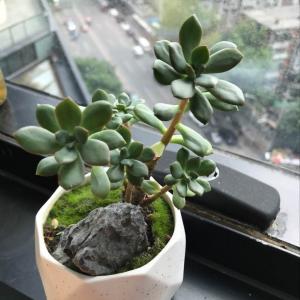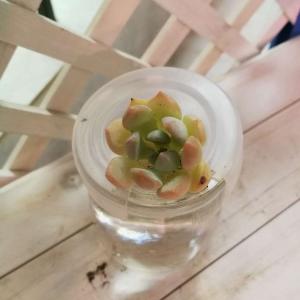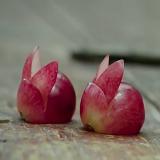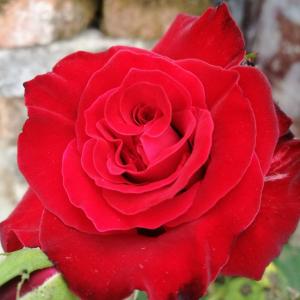文章
Miss Chen
2017年08月10日

The ability of a plant to obtain necessary plant nutrients depends largely on the pH of its soil, measured on a scale of 1 to 14. Acidic soil, sometimes called "sour" soil, has a pH below 7, considered neutral. Alkaline soil, sometimes called "sweet" soil, has a pH above 7. Most rose cultivars prefer a pH between 6 and 7. If your soil pH is below 6, you can increase the number by adding lime.

Climate and Soil
There are between 150 and 300 species and 6,000 cultivars in the Rosa genus. Roses will grow in most soils that have a high organic content, in U.S. Department of Agriculture plant hardiness zones 4b to 10b, depending on the species and cultivar. To determine if you need to add lime to your soil you have to know its pH. Test it either in the fall or spring.
Testing Soil pH
Use a spade, spoon or trowel to take a sample from the top 6 to 8 inches of soil. Do not do this when the soil is wet. Spread the sample on plastic wrap and let it dry overnight. When it's completely dry, remove stones and solid matter and put the soil in a plastic bag. It's now ready to test using a home soil testing kit that you can buy from most garden supply centers. Alternatively, you can have it tested by a commercial testing service that will also tell you of any mineral deficiencies in the soil. If your soil pH is too low for roses, add lime to raise the number.
How Much Lime to Apply
Finely ground limestone, calcium carbonate, available at most garden supply centers, is typically recommended for home gardeners. How much lime to apply to raise soil pH to 6.5, ideal for roses, depends on the type of soil. For clay soil: Add 29 1/2 ounces of lime per square yard to raise pH from 5.5 to 6.5, 41 1/4 ounces per square yard to 5 pH clay soil, and 53 ounces per square yard for 4.5 pH, per recommendations from The Royal Horticultural Society. For loam soil: Add 23 1/2 ounces of lime per square yard to raise pH from 5.5 to 6.5, 35 1/4 ounces per square yard on 5 pH loam soil, and 44 1/4 ounces per square yard on 4.5 pH. For sandy soil: Add 20 1/2 ounces of lime per square yard to raise pH from 5.5 to 6.5, 29 1/2 ounces per square yard to 5 pH sandy soil, and 38 1/4 ounces to 4.5 pH.

How to Apply
Winter is a good time to apply lime. If you apply more than 14 3/4 ounces of lime per square yard, dig half of it into the top 6 inches of soil and sprinkle the other half on the surface when you're finished. If you apply less than that amount per square yard, dig all of it into the soil. If digging is impractical, sprinkle all of it on top of the soil. It's best to add lime before you plant roses. If you sprinkle it around plants, it can take years to have any effect.

Climate and Soil
There are between 150 and 300 species and 6,000 cultivars in the Rosa genus. Roses will grow in most soils that have a high organic content, in U.S. Department of Agriculture plant hardiness zones 4b to 10b, depending on the species and cultivar. To determine if you need to add lime to your soil you have to know its pH. Test it either in the fall or spring.
Testing Soil pH
Use a spade, spoon or trowel to take a sample from the top 6 to 8 inches of soil. Do not do this when the soil is wet. Spread the sample on plastic wrap and let it dry overnight. When it's completely dry, remove stones and solid matter and put the soil in a plastic bag. It's now ready to test using a home soil testing kit that you can buy from most garden supply centers. Alternatively, you can have it tested by a commercial testing service that will also tell you of any mineral deficiencies in the soil. If your soil pH is too low for roses, add lime to raise the number.
How Much Lime to Apply
Finely ground limestone, calcium carbonate, available at most garden supply centers, is typically recommended for home gardeners. How much lime to apply to raise soil pH to 6.5, ideal for roses, depends on the type of soil. For clay soil: Add 29 1/2 ounces of lime per square yard to raise pH from 5.5 to 6.5, 41 1/4 ounces per square yard to 5 pH clay soil, and 53 ounces per square yard for 4.5 pH, per recommendations from The Royal Horticultural Society. For loam soil: Add 23 1/2 ounces of lime per square yard to raise pH from 5.5 to 6.5, 35 1/4 ounces per square yard on 5 pH loam soil, and 44 1/4 ounces per square yard on 4.5 pH. For sandy soil: Add 20 1/2 ounces of lime per square yard to raise pH from 5.5 to 6.5, 29 1/2 ounces per square yard to 5 pH sandy soil, and 38 1/4 ounces to 4.5 pH.

How to Apply
Winter is a good time to apply lime. If you apply more than 14 3/4 ounces of lime per square yard, dig half of it into the top 6 inches of soil and sprinkle the other half on the surface when you're finished. If you apply less than that amount per square yard, dig all of it into the soil. If digging is impractical, sprinkle all of it on top of the soil. It's best to add lime before you plant roses. If you sprinkle it around plants, it can take years to have any effect.
0
0
文章
Colour_
2017年08月10日


(1)盆上忽干忽湿,影响#仙客来 开花。仙客来对水分不足十分敏感,尤其是在开花阶段,遇旱会使幼小的花蕾枯萎死亡,水多则会烂根。因此浇水应定时、定量,保证盆土经常处于微潮状态,既不可缺水,也不可积水。
(2)因仙客来有较强的趋光习性,放在窗台上植株叶片会向光线射入的方向伸长,引起株形不整齐,应每隔3~4天把花器转动一定角度,使植株向四周均匀生长,保证株形的美观。
(3)当室内空气过干时,易使花蕾干枯变黑,同时叶片也会逐渐变黄,花期明显缩短,应经常向叶面喷水,以增大空气湿度。
(4)夏季置阴凉通风处养护,温度在30℃以上时植株停止生长而进入休眠状态,超过35℃时,若通风不好,极易烂球。冬季置室内向阳处,室温宜保持在10℃以上。若温度低于1O℃,则花朵易凋谢,且花色暗淡,若低于5℃,则叶片卷曲,球茎易遭冻害。
(5)盛花期前须及时摘除先期开放的1-2朵花蕾,以防过多消耗养分。入秋后进人生长旺季,这时球茎叶上的幼叶见光后会迅速长成紧密的群,致使下面的幼蕾因缺乏光照而延迟发育,因此应适当疏掉叶群中部的叶片。
0
0
文章
Colour_
2017年08月09日

#白掌 是一种常见的室内观赏植物,但白掌却是有毒的,相信很多盆友都不怎么清楚,下面就由小编为大家分析一下白掌的毒性。
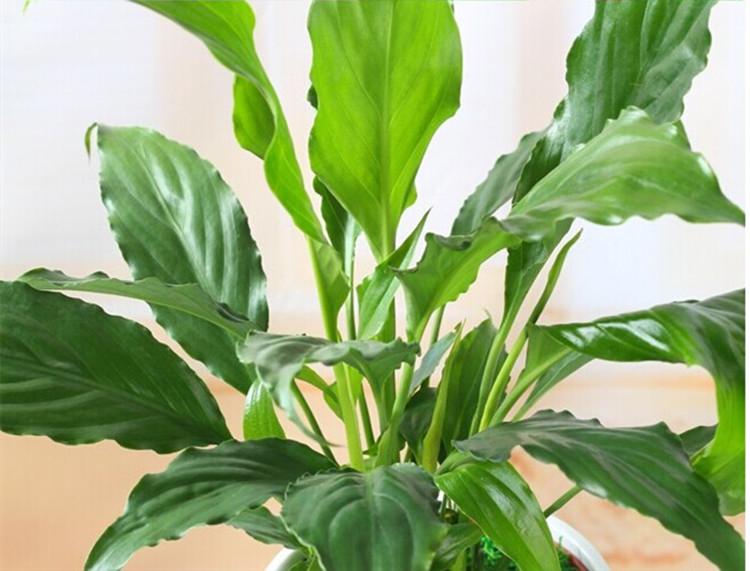
白掌的毒性分析
1、白掌具有一定毒性,其中根茎含有哑棒酶和草酸钙,叶内含有草酸和天门科素,花和汁液有轻微的毒性。在室内养护切记不要误食、误摸汁液和花蕊就行了,也不要过于亲密地接触,就没有问题的。
2、中毒症状:误食后嘴里会感觉又烧又痛,随后会肿胀起泡,嗓音变得嘶哑紧张,并且吞咽困难。
3、处理方法:多数症状会随着时间过去而减轻直至消失,如果想减轻痛苦,可以选择清凉液体、止痛药丸或者甘草类和亚麻仁的食物。
4、小知识:白掌是抑制人体呼出的废气如氨气和丙酮的“专家”。同时它也可以过滤空气中的苯、三氯乙烯和甲醛。它的高蒸发速度可以防止鼻粘膜干燥,使患病的可能性大大降低,且一年四季开花,花期长达四个月以上,是理想的室内花卉。

白掌的毒性分析
1、白掌具有一定毒性,其中根茎含有哑棒酶和草酸钙,叶内含有草酸和天门科素,花和汁液有轻微的毒性。在室内养护切记不要误食、误摸汁液和花蕊就行了,也不要过于亲密地接触,就没有问题的。
2、中毒症状:误食后嘴里会感觉又烧又痛,随后会肿胀起泡,嗓音变得嘶哑紧张,并且吞咽困难。
3、处理方法:多数症状会随着时间过去而减轻直至消失,如果想减轻痛苦,可以选择清凉液体、止痛药丸或者甘草类和亚麻仁的食物。
4、小知识:白掌是抑制人体呼出的废气如氨气和丙酮的“专家”。同时它也可以过滤空气中的苯、三氯乙烯和甲醛。它的高蒸发速度可以防止鼻粘膜干燥,使患病的可能性大大降低,且一年四季开花,花期长达四个月以上,是理想的室内花卉。
1
0
文章
Colour_
2017年08月09日

#虎耳草 叶片呈圆形或肾形,上面成暗绿色,叶背面呈现紫红色或是带斑点,春夏开花,花色呈深红色或是黄色斑点。下面是虎耳草的养殖方法和注意事项。
虎耳草的养殖方法
1、选取种苗
虎耳草一般都是选取匍匐枝顶端的幼株另行栽植来繁殖。在夏季选择须根发达、生长健壮的植株,高7-10cm,由匍匐枝长出的幼苗,拔起作为种苗。
2、栽种
(1)地栽:若是在林下栽培,要清除地面杂草和过密的灌木,按行,株距各约17cm开穴,浅栽地表,把须根压在土里。若是在阴湿的石坎或石壁上栽培,可把苗栽在石缝里,用湿润的腐殖质土把须根压紧,浇水。
(2)盆栽:盆土用腐叶土、园土、河沙各1/3混均配制。上盆后浇透水,置通风阴处。15天左右放置通风、明亮的散射光下最适宜,任其甸甸下垂。在清晨的阳光下照射2~3个小时,有助于保持虎耳草叶子的鲜明色彩,但是不能长时间放在炎热的阳光下照晒。

养护虎耳草的注意事项
1、土壤:盆栽虎耳草所选择的土壤以富含有机质的砂质土壤为最好,而且还要具有很好的排水性,可以自制培养土加上河沙混合而成。
2、温度:虎耳草喜欢温暖的环境,最适宜的生长温度是在15℃~25℃之间,虎耳草也比较耐寒,可在5℃的低温中过冬,但是花叶品种的三色虎耳草不耐寒,越冬温度在15℃,如果低于这个温度就会死亡,因此冬季的保暖也是很必须的。
3、光照:若光照不足,叶色会变得黯淡。夏季室内也需遮荫,避开强光直射。冬季室温保持5℃以上。置室内南窗附近阳光充足处。
4、浇水:虎耳草生长期间要大量浇水,使盆土充分湿润,但不能让花盆浸在水中。在植株开花后的两星期中,要逐渐减少浇水量。植株进人休眠状态时,只要盆土不干透即可。生长期间浇水,盆土要保持湿润,稍受干旱易使叶片凋落,同时也要防止盆内积水,否则易烂根。
5、施肥:肥料需从虎耳草叶下施入,以免沾污叶面影响植株生长。春季生长旺盛期,每20天施一次氮肥,夏季高温及冬季低温时不施肥。
6、除草:要经常除草,拔去过大的苔藓植物。
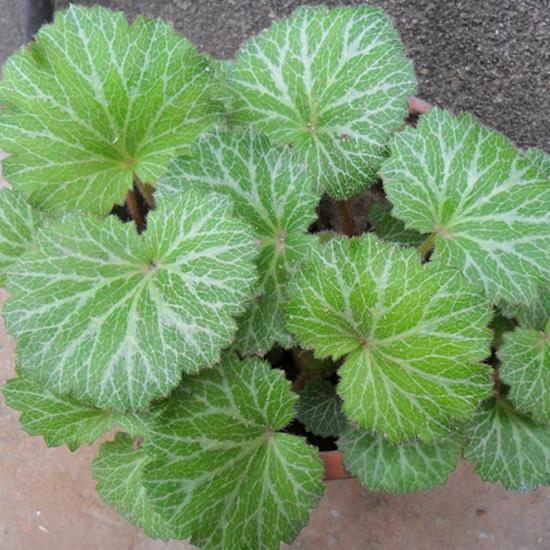
虎耳草的养殖方法
1、选取种苗
虎耳草一般都是选取匍匐枝顶端的幼株另行栽植来繁殖。在夏季选择须根发达、生长健壮的植株,高7-10cm,由匍匐枝长出的幼苗,拔起作为种苗。
2、栽种
(1)地栽:若是在林下栽培,要清除地面杂草和过密的灌木,按行,株距各约17cm开穴,浅栽地表,把须根压在土里。若是在阴湿的石坎或石壁上栽培,可把苗栽在石缝里,用湿润的腐殖质土把须根压紧,浇水。
(2)盆栽:盆土用腐叶土、园土、河沙各1/3混均配制。上盆后浇透水,置通风阴处。15天左右放置通风、明亮的散射光下最适宜,任其甸甸下垂。在清晨的阳光下照射2~3个小时,有助于保持虎耳草叶子的鲜明色彩,但是不能长时间放在炎热的阳光下照晒。

养护虎耳草的注意事项
1、土壤:盆栽虎耳草所选择的土壤以富含有机质的砂质土壤为最好,而且还要具有很好的排水性,可以自制培养土加上河沙混合而成。
2、温度:虎耳草喜欢温暖的环境,最适宜的生长温度是在15℃~25℃之间,虎耳草也比较耐寒,可在5℃的低温中过冬,但是花叶品种的三色虎耳草不耐寒,越冬温度在15℃,如果低于这个温度就会死亡,因此冬季的保暖也是很必须的。
3、光照:若光照不足,叶色会变得黯淡。夏季室内也需遮荫,避开强光直射。冬季室温保持5℃以上。置室内南窗附近阳光充足处。
4、浇水:虎耳草生长期间要大量浇水,使盆土充分湿润,但不能让花盆浸在水中。在植株开花后的两星期中,要逐渐减少浇水量。植株进人休眠状态时,只要盆土不干透即可。生长期间浇水,盆土要保持湿润,稍受干旱易使叶片凋落,同时也要防止盆内积水,否则易烂根。
5、施肥:肥料需从虎耳草叶下施入,以免沾污叶面影响植株生长。春季生长旺盛期,每20天施一次氮肥,夏季高温及冬季低温时不施肥。
6、除草:要经常除草,拔去过大的苔藓植物。

0
0







